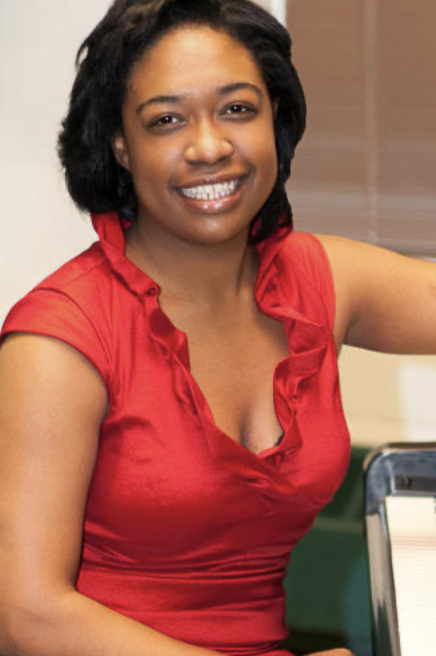|
Symphony
MONUMENTAL MAHLER 5TH IN SO CO PHIL'S SEASON ENDING CONCERT
by Terry McNeill
Sunday, April 14, 2024
Chamber
OAKMONT SEASON CLOSES WITH STRAUSS' PASSIONATE SONATA
by Terry McNeill
Thursday, April 11, 2024
Chamber
MORE GOLD THAN KORN AT ALEXANDER SQ CONCERT
by Terry McNeill
Sunday, April 7, 2024
Choral and Vocal
VIBRANT GOOD FRIDAY REQUIEM AT CHURCH OF THE ROSES
by Pamela Hicks Gailey
Friday, March 29, 2024
TWO OLD, TWO NEW AT THE SR SYMPHONY'S MARCH CONCERT IN WEILL
by Peter Lert
Saturday, March 23, 2024
Chamber
NOT A SEVENTH BUT A FIRST AT SPRING LAKE VILLAGE CONCERT
by Terry McNeill
Wednesday, March 20, 2024
THIRTY-THREE PLUS VARIATIONS AND AN OCEAN VIEW
by Terry McNeill
Saturday, March 16, 2024
Choral and Vocal
A ST. JOHN PASSION FOR THE AGES
by Abby Wasserman
Friday, March 8, 2024
Choral and Vocal
SPLENDID SCHUBERT SONGS IN SANET ALLEN RECITAL
by Terry McNeill
Saturday, March 2, 2024
Chamber
SHAW'S MICROFICTIONS HIGHLIGHTS MIRO QUARTET'S SEBASTOPOL CONCERT
by Peter Lert
Friday, March 1, 2024
|
 |
 Pianist Michelle Cann |
SR SYMPHONY CHOOSES HARMONY OVER FOOTBALL
by Steve Osborn
Sunday, February 13, 2022
In his introduction to the Super Bowl Sunday concert by the Santa Rosa Symphony, guest conductor Aram Demirjian remarked, “We’re so glad you’ve chosen harmony over football.” He may have meant harmony in the literal sense, but his comment also evoked the idea of harmony between people rather than the ritualized combat of football.
Harmony of both kinds was in abundance in all four quarters of Demirjian’s innovative program, which included works by Black American composers William Grant Still and Florence Price, along with two mainstays of the American repertoire, Gershwin’s “Rhapsody in Blue” and Copland’s “Appalachian Spring.” Binding these disparate works together was Mr. Demirjian’s infectious conducting, stellar playing by a pandemic-reduced core of Symphony musicians, and the transcendent artistry of piano soloist Michelle Cann.
Ms. Cann is a pianist of prodigious talent, coupled with heartfelt emotion and exquisitely sensitive playing. She burst forth in the opening bars of Price’s “Concerto in One Movement,” sounding like Rachmaninoff himself launching into one of his own piano concertos. The brilliance of the driving piano line was matched by superb orchestral writing, with particular emphasis on the strings. A strong four-note theme and classic motivic development brought the concerto within a few minutes to a resonant summit, followed immediately by loud applause … and more music. Turns out that “Concerto in One Movement” is a misnomer because the piece really consists of three brief movements in the classic fast-slow-fast configuration of a standard concerto.
The post-applause slow movement featured lovely duets between the pianist and principal oboist Laura Reynolds, followed by Ms. Cann and principal cellist Adelle-Akiko Kearns. The transition to the upbeat third movement was much smoother than between the first and second, and the ragtime sound was instantly captivating: people around me began swaying in their seats. The movement turned into a romp, complete with snare drum and engaging syncopations, all in the background of Ms. Cann’s impassioned playing. When she finished, the correctly placed ovation was standing and immediate. “What a ride that was,” said a nearby concertgoer.
The ride was over, but the artist was just getting warmed up for Gershwin’s “Rhapsody in Blue,” with a little help from the orchestra’s superb wind players. Principal clarinetist Roy Zajac opened up the festivities with the iconic Gershwin slide up from the depths, rendered in its full glory. He was followed in short order by trombonist Amy Bowers and mute-wielding trumpeter Daniel Gianola-Norris, both of whom played with unerring precision.
Ms. Cann blended perfectly with this entrancing background, putting her exquisite phrasing and dynamic control on full display. Also on display was her full head of jet-black hair, with a glittering hair brooch fastened near the middle, shining forth like a twinkling star. When she leaned over the keyboard, her massive curls hid her hands from view, but her meandering brooch left no doubt that her upper torso was fully active.
When the cadenza rolled around, the pianist played it to the hilt, with a masterful accelerando punctuated by pregnant pauses. After a generation of United Airlines ads that beat “Rhapsody in Blue” to a pulp, Gershwin has rarely sounded so fresh and so alive.
In contrast to the vitality of Michelle Cann, the concert opener, William Grant Still’s “Darker America,” seemed somewhat inert. The musical ideas and the compositional techniques were all there, but they didn’t merge into a cohesive whole. To a lesser degree, much the same could be said for “Appalachian Spring,” presented here in its complete ballet score rather than in the familiar suite extracted from that score.
As Mr. Demirjian noted in his introductory remarks, Copland left out the gloomy parts of the ballet when assembling the suite, which is consistently happy, and the conductor claimed that adding the gloomy parts back in made the happy ones even happier. He was correct about the influence of the gloomy parts on the happy ones, but the subsequent performance revealed that the gloomy sections disrupted the score’s unity and flow. It would be better to listen to the gloom while watching the actual ballet.
In any event, the performance was superb. The opening was serene, and the flute, clarinet and bassoon solos were beguiling. The strings were admirably uniform in their attack; their bows flowed as one. Meanwhile, Mr. Demirjian exhibited graceful gestures on the podium, with a smoothly flowing body language that was easy to read. The performance was wonderfully sustained, and the concluding flute solo by Kathleen Reynolds was piercingly beautiful.
|

